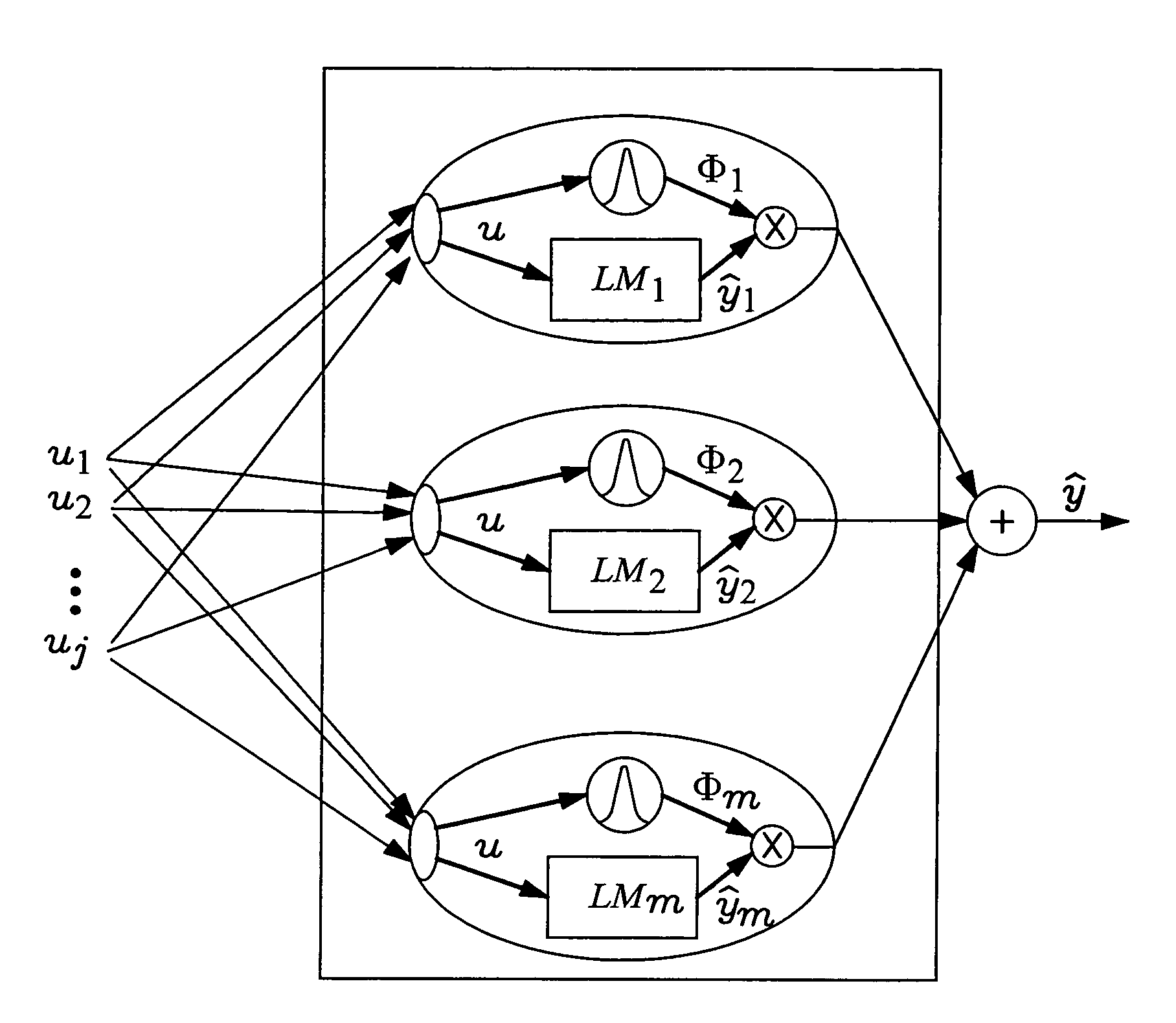Method for creating a non-linear, stationary or dynamic model of a control variable of a machine
a technology of control variable and model, which is applied in the direction of machine control, adaptive control, instruments, etc., can solve the problems of low low computing efficiency, and insufficient data quantity for model formation in most practical applications. achieve the effect of improving the method efficiency, reducing computing effort, and improving the accuracy of the model
- Summary
- Abstract
- Description
- Claims
- Application Information
AI Technical Summary
Benefits of technology
Problems solved by technology
Method used
Image
Examples
Embodiment Construction
[0022]FIG. 1 shows the setup of a local model tree. Each partial model (designated as LMi) uses the input vector u=[u1·u2 . . . uq]T to calculate its associated weighting function Φi and its partial output value ŷi of the non-linear target function ƒ(u). The total network output value is the sum of all weighted partial output values ŷi: (equation 4). Here, θi is a vector with the parameters of the partial models, and the partial models are created with u and θi. The model is static if the input vector is comprised of stationary variables and becomes dynamic if one or several of the input variables either represents the temporal derivation of a system variable or is the feedback of the output quantity delayed by one br several scanning steps of a time-discrete system.
[0023]The total quality of the net output is determined by two different model grade criteria. Used as first model grade criteria for n training data points and their respective result values, the associated net outputs ...
PUM
 Login to View More
Login to View More Abstract
Description
Claims
Application Information
 Login to View More
Login to View More - R&D
- Intellectual Property
- Life Sciences
- Materials
- Tech Scout
- Unparalleled Data Quality
- Higher Quality Content
- 60% Fewer Hallucinations
Browse by: Latest US Patents, China's latest patents, Technical Efficacy Thesaurus, Application Domain, Technology Topic, Popular Technical Reports.
© 2025 PatSnap. All rights reserved.Legal|Privacy policy|Modern Slavery Act Transparency Statement|Sitemap|About US| Contact US: help@patsnap.com



